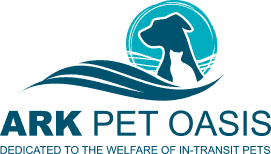Staff
Understanding Air Travel Regulations for Pets
Traveling by air with pets requires adherence to both federal and state regulations, along with specific airline policies. The transportation of live animals is governed by the Animal Welfare Act, enforced by the USDA’s Animal and Plant Health Inspection Service. Key requirements under this act include age and weaning restrictions for dogs and cats, standards for cages and shipping containers, time limits for pre-flight animal presentation, provisions for food and water, temperature exposure limits, and restrictions on Cash-On-Delivery (COD) shipments of animals.
Airline Specific Policies and Preparations
Each airline has its own set of rules that complement USDA regulations. Common policies include requiring a health certificate for the pet, the option for pets to travel as checked baggage or cargo, and conditions for pets traveling in pressurized holds or as carry-on. Owners must book pet reservations simultaneously with their flights due to limitations on the number of pets per flight, and prepare for altered plans due to unpredictable weather. For international travel, additional documentation and compliance with local import laws are crucial.
Stress Factors and Considerations for Pet Travel
Flying can be highly stressful for pets, especially for older or health-compromised animals. Owners should evaluate the suitability of the destination for their pet and consider alternatives like boarding or pet-sitting. Consultation with a veterinarian is vital to ensure proper care during the trip, and sedation, often discouraged, should only be considered with professional approval.
Pet Accommodation and In-Flight Care
Small dogs may fly in the cabin in carriers under the seat, while larger dogs usually travel in the cargo hold, a decision fraught with risks. In the cargo hold, pets are housed in a pressurized, temperature-controlled section, separate from baggage. Crate training and familiarization with the airport environment are essential for reducing stress. For long-haul flights, pets are fed no later than six hours before the flight, with access to water, especially during layovers.
Addressing Frequently Asked Questions
- Flying Process: Pets must have the correct documentation, a suitable crate, and adhere to specific airline requirements. Early arrival at the airport and adherence to TSA rules are necessary.
- Stress Factors: Air travel can be highly stressful for pets, with factors like unfamiliar environments, noise, and temperature changes.
- Bathroom Needs: Pets usually relieve themselves in their crate, which should be lined with absorbent materials. For long flights, some airlines may offer relief areas during layovers.
- In-Cabin Travel: Most airlines do not allow pets to sit on laps; small pets must be in carriers under the seat.
- Pet Relief Duration: Cats can typically hold their bladder for up to 8-10 hours, though this varies depending on individual health and age.
Conclusion and Recommendations for Pet Owners
To ensure a safe and comfortable journey for pets, owners must thoroughly research airline policies, prepare their pets for the crate and airport environments, and consider the pet’s well-being throughout the journey. Consulting a pet travel agency can simplify the complex process of international pet transport.
Leave a reply





